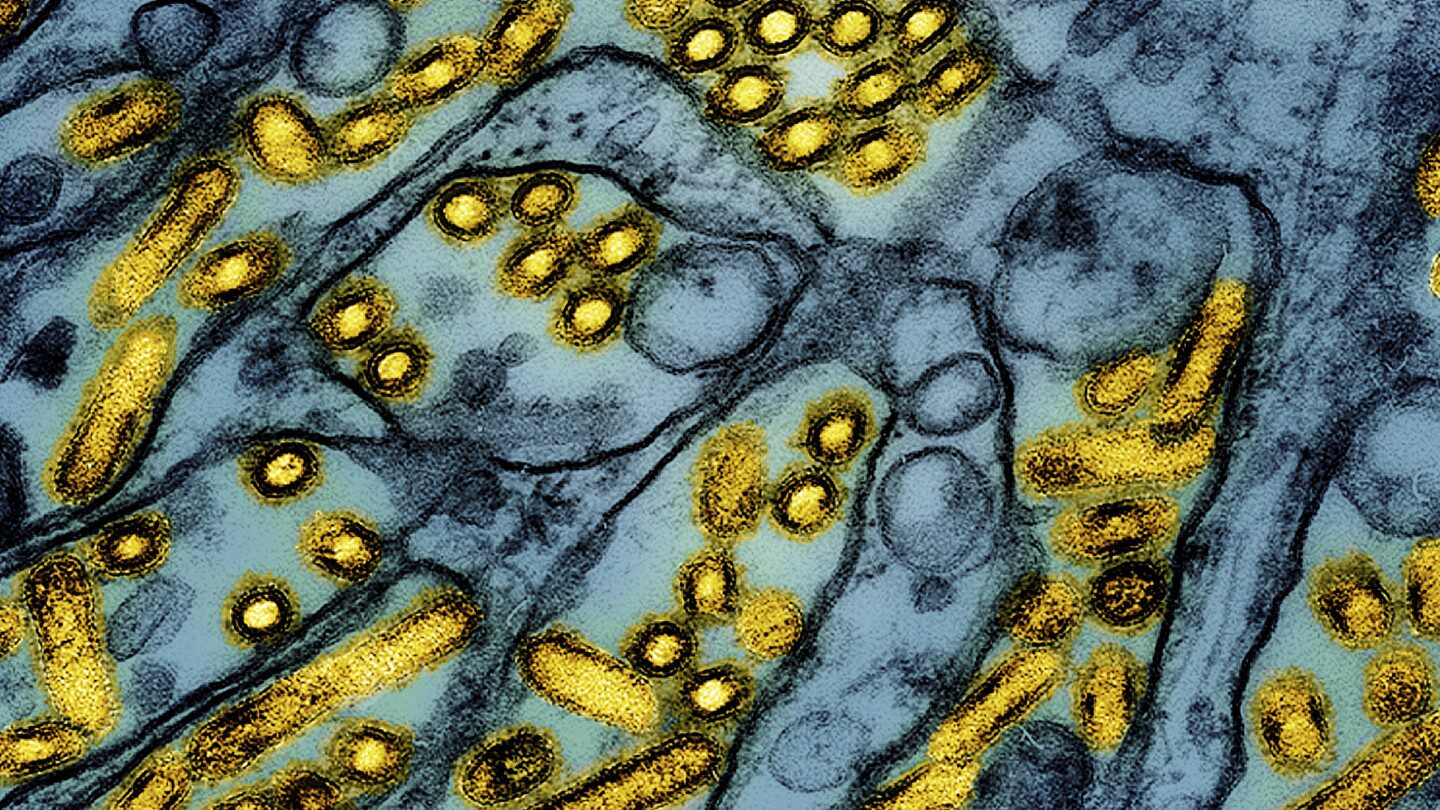
NEW YORK (AP) — Recently, authorities announced that a dairy employee in Nevada has contracted a novel strain of bird flu, unlike the variant that has been prevalent in U.S. livestock since the previous year.
This infection was reportedly mild, with the worker primarily experiencing redness and discomfort in the eyes—symptoms typical of bird flu cases related to dairy animals. Thankfully, the individual did not require hospitalization and has since fully recovered, as confirmed by the Centers for Disease Control and Prevention (CDC).
The new strain has previously been reported in over a dozen individuals who were exposed to poultry, marking this as the first incident linked to exposure from cattle. According to state health officials, the dairy worker was in contact with infected animals at a farm located in Churchill County, in the central region of Nevada.
CDC representatives emphasized that there is no indication that the virus has transmitted from this person to others, reiterating that the virus presents a low risk to the broader public.
The ongoing bird flu epidemic among animals and some human cases is scientifically categorized as Type A H5N1 influenza, with various strains identified.
One such variant, termed B3.13, was confirmed in March after its emergence in cattle late last year. This strain has impacted 962 cattle herds across 16 states, predominantly in California.
The more recent variant, identified as D1.1, was detected in Nevada cattle on January 31 and was discovered in milk samples collected during a monitoring initiative launched in December.
This finding indicates that distinct strains of the virus have transmitted from wild birds to cattle on at least two occasions. Experts have raised concerns regarding the potential for wider dissemination and the challenges associated with managing infections in animals and the humans who work with them.
In the past year, at least 68 individuals in the U.S. have been reported as infected with bird flu, primarily those who had close contact with cows or poultry, according to CDC statistics. The majority were infected with the B3.13 strain. While earlier reports indicated that D1.1 had been observed solely in Louisiana and Washington, recent data suggests that this strain may have infected 15 individuals across five states—Iowa, Louisiana, Oregon, Washington, and Wisconsin—all linked to poultry contact.
The D1.1 strain was associated with the first U.S. fatality related to bird flu and caused a serious illness in Canada. A Louisiana resident died in January after suffering severe respiratory symptoms following exposure to wild and backyard birds. Additionally, a teenage girl in British Columbia spent months hospitalized due to a virus traced back to poultry.
While the risk remains low for the general public, the CDC advises that individuals with regular or close contact with infected livestock, birds, or other animals should take necessary precautions, including the use of protective equipment.
___
The Associated Press Health and Science Department is supported by the Howard Hughes Medical Institute’s Science and Educational Media Group and the Robert Wood Johnson Foundation. The content represented is solely that of the AP.









